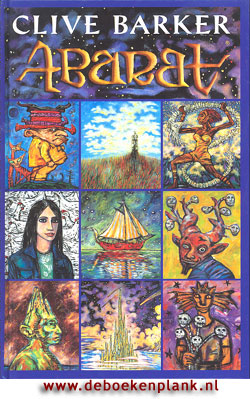Abarat by Clive Barker
 Children's literature is a curious thing. There's a fine balance--You can't get too deep/brainy or you leave the kids in the murk. But you can't sound patronizing, either.
Children's literature is a curious thing. There's a fine balance--You can't get too deep/brainy or you leave the kids in the murk. But you can't sound patronizing, either.Clive Barker masters this balance, proving that he can do more than just horror. The style is unmistakably Clive's as is the plot and setting. It's really not that much different from his other books save the plot's been cleaned up a bit.(People who've read Clive Barker are aware of the sexual content in a lot of his books)
We have Candy Quackenbush, the quintessential outsider living in a town as plain and boring as the ones most of us live in. This only serves to encourage the desire to see Candy find happiness elsewhere.
Enter Abarat. Abarat is a collection of islands where each represents an hour and these islands are that hour all the time. So you could conceivably have it be noon your whole life. What's interesting about this is the antagonist, Christopher Carrion. He was in love with the late Princess Boa, who represents light and he'd promised her that if they married they could change the world. Carrion is the Lord of Midnight, and when you stop to think about it, Midnight is not only the end of the day, but also the start of the next day. I smell a paper here.
The artwork in this book is also fabulous. I think what captivated me most about it was that Clive was able to combine his two creative skills into one piece. It was interesting to be reading his description of John Mischeif and all his brothers living on his antlers and then to see a painting of Mischeif. Usually, someone else illustrates a kids' book and it's their interpretation and so you're left to wonder if that's the image the writer had truly intended.(At least that's what goes through my mind, but then I'm a writer myself.) But these paintings were by the author himself just as he'd intended it. The art (as you can see from the cover) is bright and dynamic. The shapes and colors seem very deliberate. The brightness of these pieces seem to fit the type of story this is almost perfectly. But there again, both creations come from the same person, so we're getting Clive's entire vision without any misleading interpretations.
Not only does this book make the balance between simplicity and condescention, but it's also written in such a way that older folk like myself can enjoy it without having to shift our mind-set. Well done, Mr. Barker.


0 Comments:
Post a Comment
<< Home